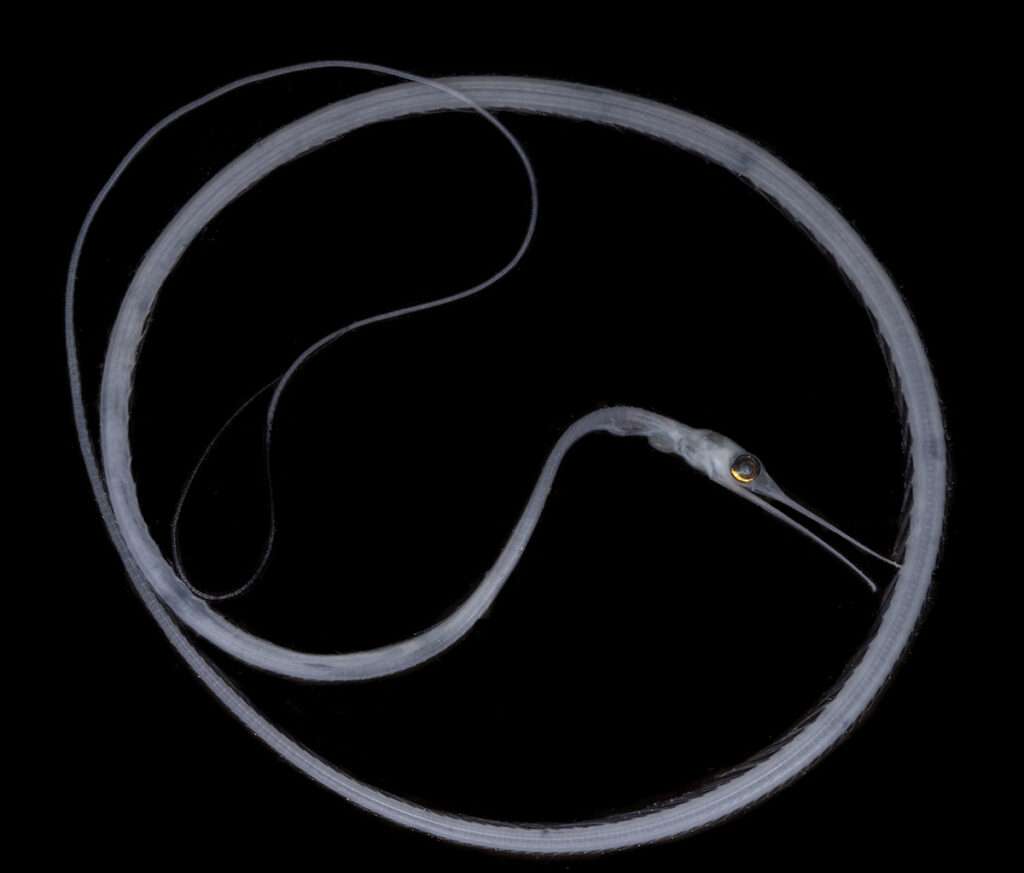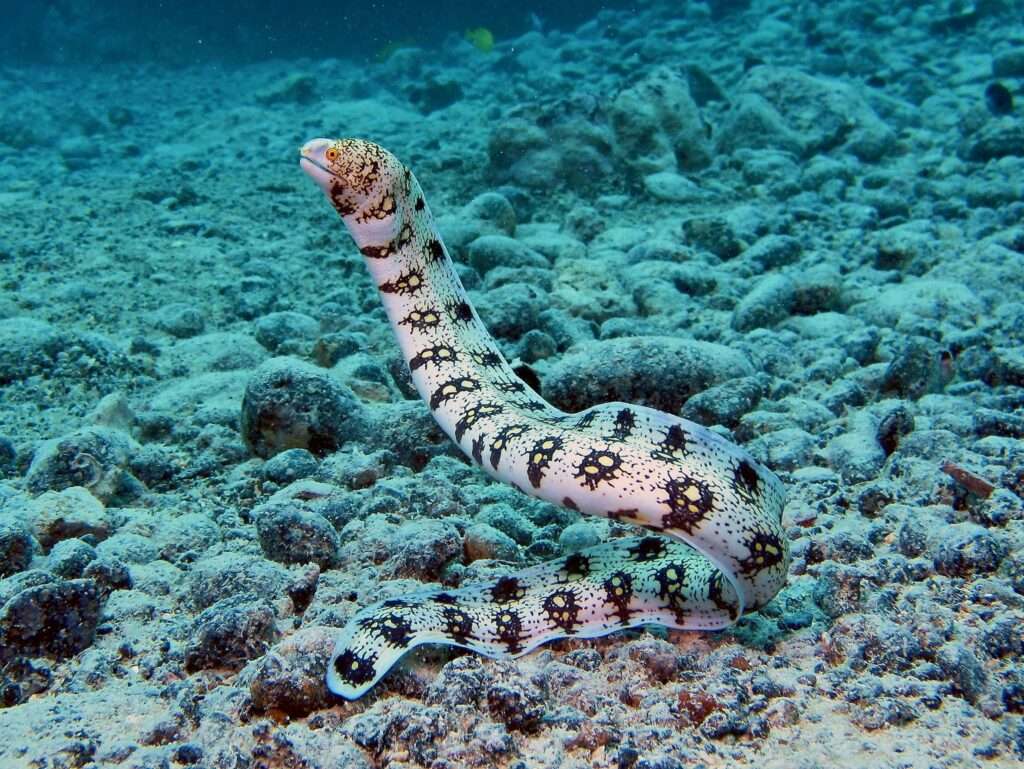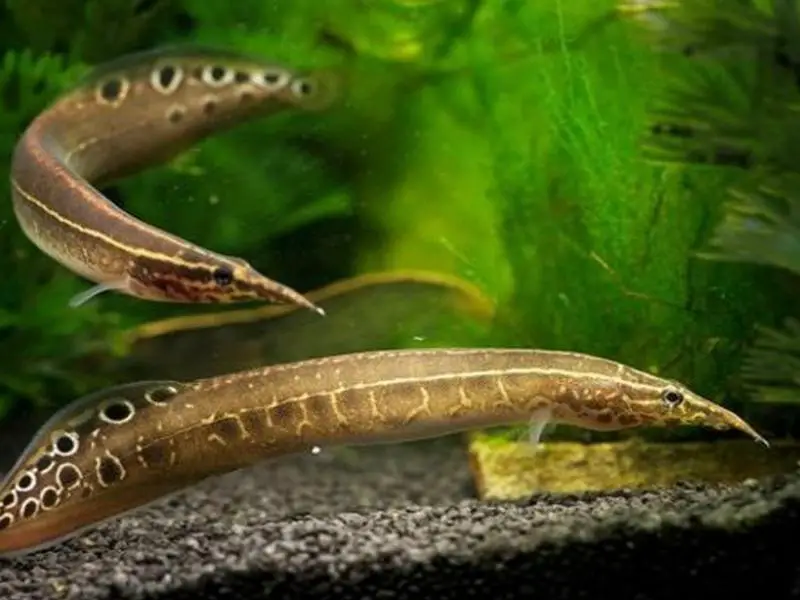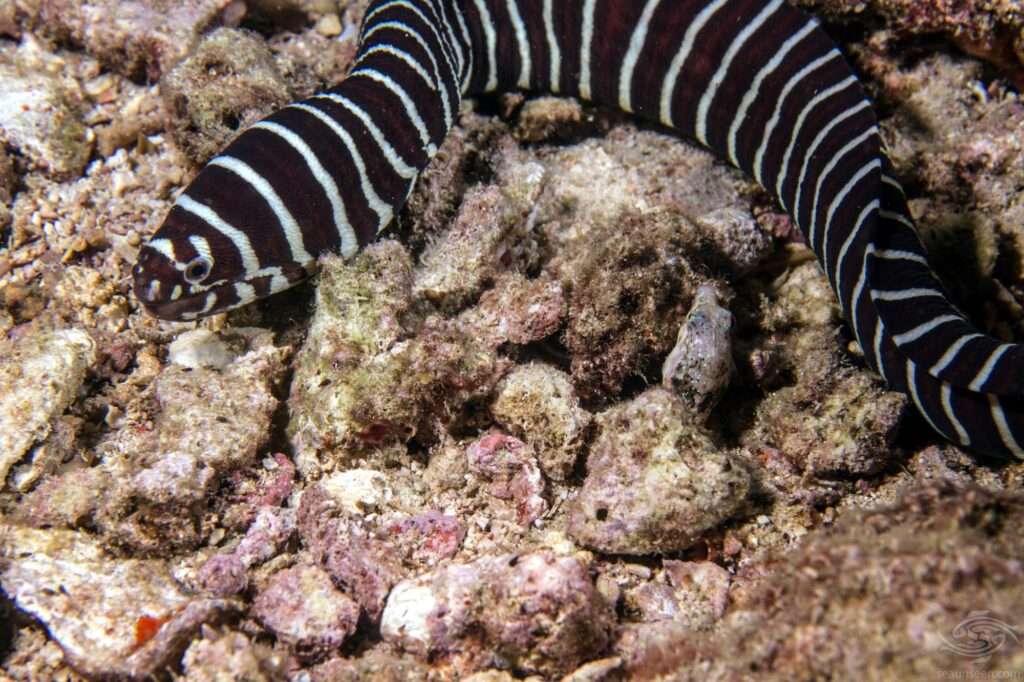
This family of pelagic eels consists of nine different species. (The portions of the ocean’s pelagic zone that are not close to the ocean’s bottom shore.) In ocean environments all throughout the world, snipe eels can be found. They are typically discovered 1,000–2,000 feet under the surface.
The length of a snipe eel ranges from three to five feet. Their jaw is the most peculiar part of them. They have long, slender jaws with an oppositely curving end. Both the upper and lower jaws have upward and downward bends. The snipe, a bird with a long, slender bill that resembles the snipe eel’s jaw, gave rise to the name “snipe eel.”
Traits
The snipe eel, scientifically referred to as Nemichthys scolopaceus, is an unusual-looking fish. It resembles a long strand of string or ribbon with a huge bulbous head at one end and has a long body that can reach five feet in length. Its body’s thinness has given it the moniker “threadfish.” It is sometimes known as the deep sea duck due to its large, avian-like beak. The snipe eel is the only animal on Earth with more vertebrae than its lengthy body. There are around 750 vertebrae in its spine. Its body is so thin that it actually has a length that is 75 times greater than its width. It weighs only a few ounces despite the great length of the body it fits. Its posterior is so little that a short filament emerges from it at the end. The anus of the snipe eel is situated on its throat.
The upper and lower jaws of the snipe eel are incredibly lengthy and curl away from one another at the tips. This indicates that when the eel closes its mouth, they do not collide. The eel may catch its prey with the aid of these bent jaws. The small hooked teeth that cover the jaws aid in the catching of tiny shrimp and other crustaceans. Tiny backward-pointing teeth on the eel’s open mouth catch the shrimp’s antenna as it swims. The shrimp is then maneuvered into the mouth and consumed. The snipe eel has proportionately large eyes for its body size, like many deep sea animals. These big eyes aid it in capturing the scant light that makes it through the deep sea’s darkness. The body’s hues range from dark brown to grey, and its fins are almost entirely black. In contrast to females, guys age differently because their jaws shorten and they lose their teeth. Due to this distinction, scientists first believed that the men and females belonged to different species.
Reproduction
It appears that snipe eels spawn primarily in the spring, but also into the early summer, according to observations of various species of snipe eels in the Sargasso Sea and off the coast of California. Eels’ juvenile stages, known as leptocephali, or “little heads,” differ from their adult counterparts in appearance. They can take on elongated or more leaf-like shapes and are flat and translucent. For several months, they stay in the larval stage close to the surface (upper 200 m), before descending to undergo metamorphosis. Although much longer than the majority of other fish, it is comparable to other eel species.
Keeping as Pet

Habitat
A mid-water fish called the snipe eel can be found in open waters between 300 and 6,000 feet deep (between 90 and 1,800 meters). Latitude affects the depth. In shallower waters at higher latitudes and deeper seas at lower latitudes, respectively, are snipe eels to be found. The majority of the information we have on this animal comes from trawl-caught specimens. All of the world’s oceans, including temperate and tropical, have snipe eels. The slim sniper eel is a deep-water predator that dwells in the open ocean’s mesopelagic and bathypelagic zones.
Diet
The thin snipe eel is a predator that hunts pelagic crustaceans in the deep ocean’s gloom. Scientists believe it takes its prey by swimming with its mouth open and cutting its head and “beak” side to side when it detects close prey. However, its habits are not fully known. Slender snipe eels are consumed by larger fish, such as some shallow-water species that dive for food (such as some tunas).
Table





